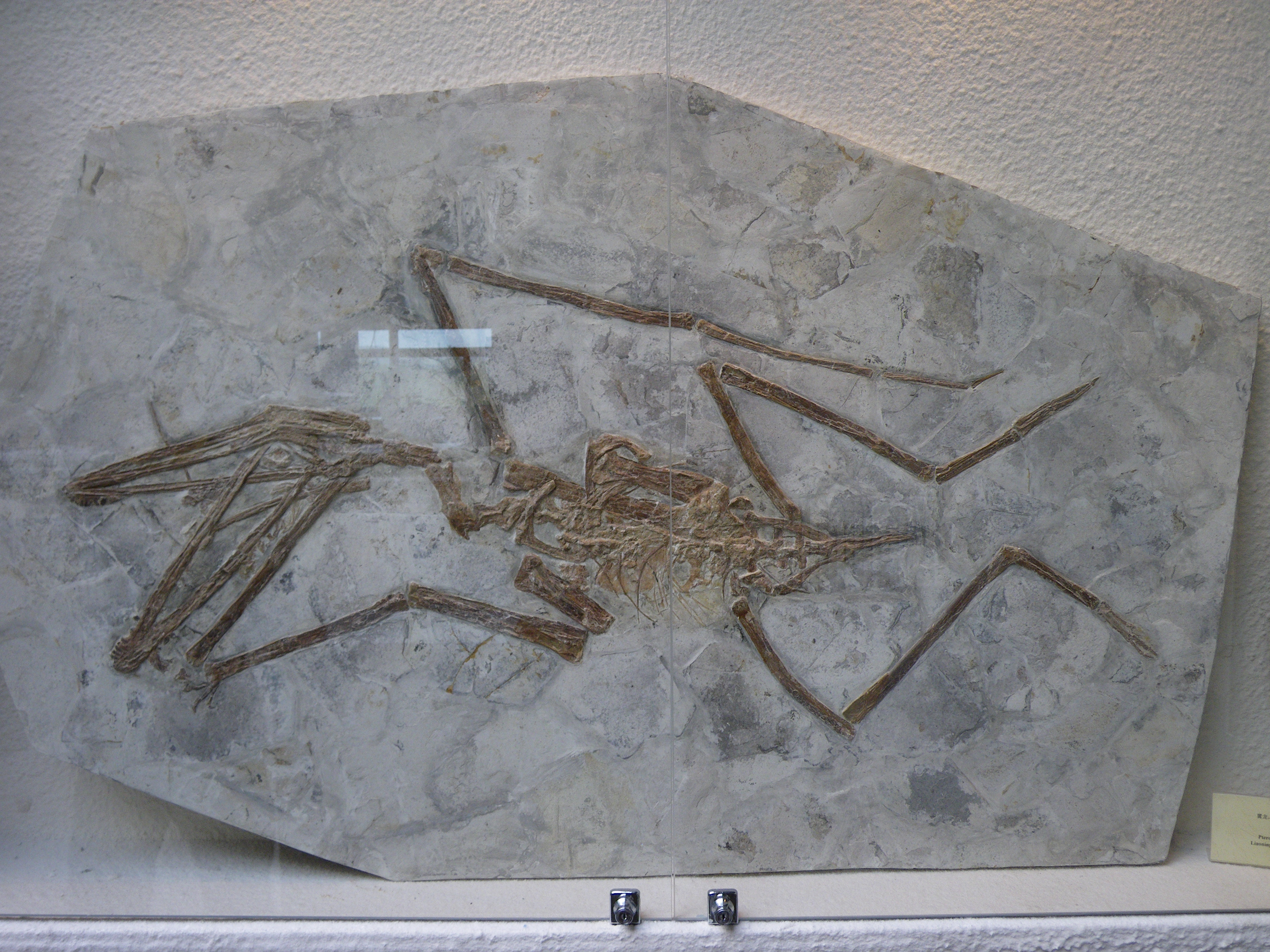I was going though a bunch of files this week hunting down some photos of Chinese pterosaurs and came across this one. I took it in a small private museum in Liaoning ten years ago and so didn’t record any details at the time since the material was never likely to be accessible for study and I was only there for an hour or so. There’s also no scale and of course the lighting is less than ideal. My memory of it is sketchy at best, but I remember it being quite a large specimen, though if it has stuck in my mind any further it would have been obvious then (and indeed more recently) what it looked like – it could be a second specimen of Luchibang.

A second specimen of Luchibang?
One thing that was very difficult with naming that taxon was establishing that it was genuine given its unusual mixture of features and proportions. Despite a very extensive section in the supplementary information of the paper on nature of the specimen and extra preparation work to establish that is is genuine, I’ve still seen comments online (including from people who should know better) claiming it might be a composite. I have though also heard of other specimens in China that are long-legged istiodactylids and apparently I’d already seen one but forgotten.
This is clearly an istiodactylid based on the skull, with the classic rounded jaw tip and teeth limited to only the front of the mouth. Like Luchibang and indeed a number of Liaoning istiodactylids, the mandible has rotated and is not in lateral view like the rest of the skull (though here the skull is rather crushed). The neck vertebrae are similarly ornithocheiroid-like and also preserved in dorsal view. The wings and legs though are not like ornithocheiroids, with a wing-finger with distinctly azhdarchoid-like proportions and long hindlimbs with large feet. This would generally be an odd combination, but taking some quick measurements on the photo shows that the broad proportions of the jaw, coracoid, humerus, ulna, wing metacarpal, wing phalanges, femur, tibia and metatarsal are all very similar to those of Luchibang. At the bare minimum that makes this extremely intriguing and without looking further into it, does make this a potential second specimen.
That said, there needs to be caution here. Looking as closely as possible at this less than perfect photo, throws up some oddities. The toes are a rather odd colour compared to the rest of the skeleton (though they look like they might simply not have had lacquer put on them), the humeri look weirdly wide (though could be crushed), and the wrist elements appear to be missing. There’s some kind of odd effect around many of the bones which could be clean up work and some filler, but could also be where bones have been moved around to make things look better, or of course rather worse, have been added in from another specimen. Even so, as with Luchibang, there is very considerable overlap across numerous elements. The mandible overlaps one of the wings, the cervicals overlap with the scapulocoracoid, the proximal wings and femora overlaps with the mass of bones of the torso and other wing and leg parts are in close association with each other.
So while I’d preach caution about this specimen without much better photos (and of course far better still, seeing it in person), it is a credible candidate for a second long-legged istiodactylid. Despite the fact that it looks like it has had work done on it, it would be rather odd indeed that someone had created a composite where they had managed to find an istiodactylid skull with a first wing phalanx of the correct length underneath it and of the right colour and preservation type to match with an unrelated azhdarchid body of the right size and proportions, that happens to have an ornithocheird-like posterior cervicals on it, and where all the different elements are a match in size for a second, unrelated specimen. In short, while some details are a little questionable, it looks like the majority of the elements as presented are all from a single specimen and that’s an azhdarchoid-like winged and legged istiodactylid, and right now that means Luchibang.
More and better presented specimens with proper descriptions are really needed here, but I think on balance this provides reasonable mutual support of both specimens being genuine. The faked Chinese fossils I’ve seen have numerous obvious anatomical issues or the composite parts are of very different preservational quality and type. Even poorly faked and restored specimens are often sold for very large sums and the goal is to produce something extremely aesthetically pleasing, not scientifically plausible, so there’s little motivation to make exceptional and high-quality fakes, especially from specimens like this one where the skull is mashed up. As such, then as reported, there do appear to be more of these istiodactylids out there with the potential to explain a lot more about their unique proportions and ecology and this is hopefully only an indication of more to come from Chinese collections.

Reblogged this on Dave Loves Dinosaurs.
As we are only working from photos, much caution is warranted. However, Luchibang I has a shoulder girdle, humerus and sternum (oblong sternal plate) that is quite clearly azhdarchoid and compares closely with, for example, Sinopterus. Meanwhile, Luchibang II has a shoulder girdle, humerus and sternum (hemispherical sternal plate) that matches closely to that of ornithocheiroids. So, either evilution has been working overtime, or there is a problem…